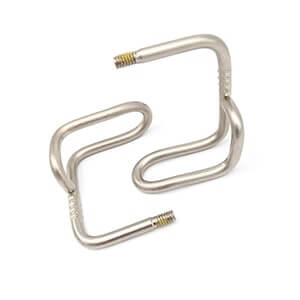Get unique, complex parts easily. No matter your requirements, Chaoyi Spring creates hard-to-produce coil springs and wire forms.
Let us help you create the custom wire form you need, from S-hooks and J-hooks to utility hooks and more.
We work closely with customers across a wide range of industries, helping them design and manufacture made-to-order parts.
Why choose Chaoyi Spring? We prioritize customer-focused collaboration, modern equipment and the latest technology to make your parts per print.
Find the information and guidance you need, from measuring a spring to learning about materials, placing an order and much more.
Torsion springs, often overlooked in the world of spring design, are crucial components that power countless everyday objects. From the simple act of closing a door to the intricate mechanics


Torsion springs, often overlooked in the world of spring design, are crucial components that power countless everyday objects. From the simple act of closing a door to the intricate mechanics of a watch, torsion springs silently work behind the scenes, providing the torque needed for smooth and reliable operation. Their unique ability to store and release energy through twisting motion makes them versatile tools in engineering, particularly when it comes to controlling rotational movements. But what exactly are torsion springs, how do they work, and what makes them so special? Let's delve into the fascinating world of torsion springs and uncover the intricacies of their design and application.

Torsion springs, unlike their compression and extension counterparts, work by twisting rather than compressing or stretching. They are typically made of a coil of wire, either round or rectangular in cross-section, that is designed to resist and store energy when twisted about its axis. As a torsion spring is twisted, it stores potential energy, much like a coiled-up rubber band. When released, this stored energy is converted into rotational force, driving the connected object in the desired direction.
Imagine a simple door hinge. When you open the door, you apply a twisting force to the hinge, and the torsion spring inside resists this motion. The spring stores the energy you applied, and when you release the door, the spring's stored energy is released, causing the door to close smoothly. This is a basic example of how torsion springs work in everyday applications.
The amount of torque a torsion spring can generate depends on several factors, including the spring's wire diameter, coil diameter, material properties, and the angle of twist. Engineers carefully consider these factors when designing a torsion spring to meet specific application requirements.
Torsion springs come in a variety of shapes and sizes, each designed for specific applications. Some common types include:
Torsion springs are widely used in various industries due to their ability to provide controlled rotational force. Here are some common applications:
Designing and manufacturing torsion springs requires a deep understanding of spring mechanics, material properties, and manufacturing processes. Engineers use specialized software and tools to analyze and optimize spring design to meet specific application requirements.
Torsion springs can be made from various materials, including steel, stainless steel, copper, and bronze, depending on the required strength, durability, and corrosion resistance. The manufacturing process involves bending and coiling the material into the desired shape, followed by heat treatment to achieve the desired spring properties.
Torsion springs offer several advantages over other types of springs, making them a popular choice in a wide range of applications:
Torsion springs, though often hidden from view, are essential components that play a vital role in the functionality of countless machines, devices, and everyday objects. Their ability to provide controlled rotational force makes them indispensable in a variety of industries. The next time you open a door, adjust a window blind, or use a retractable pen, remember the silent power of torsion springs working behind the scenes, making these tasks smooth and effortless.
The world of torsion springs is a fascinating and intricate one, full of innovative designs and applications that continue to shape our world. As engineers push the boundaries of spring technology, we can expect to see even more innovative and groundbreaking uses for torsion springs in the future.
Browse some of the custom wire forms and springs that we manufacture. Don’t see what you need? We specialize in made-to-order products that meet your application requirements.
Visit Our GalleryNeed a custom wire form or coil spring? We make it work. Fill out the contact form and a representative will respond within 1 business day. If you have a PDF or CAD file, you can submit to request a quote.